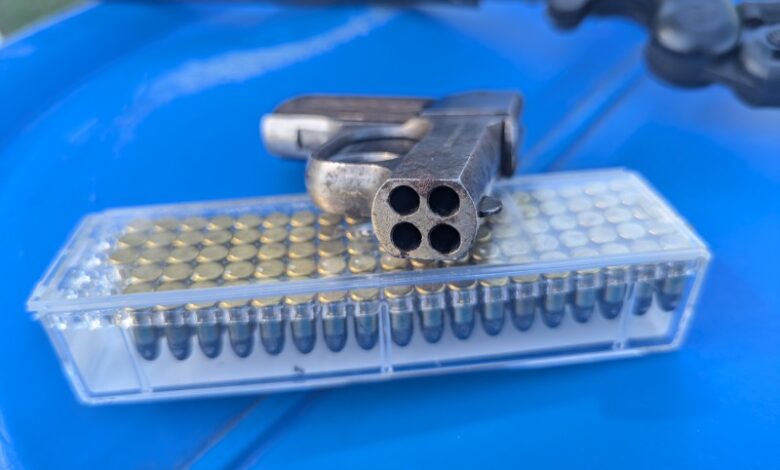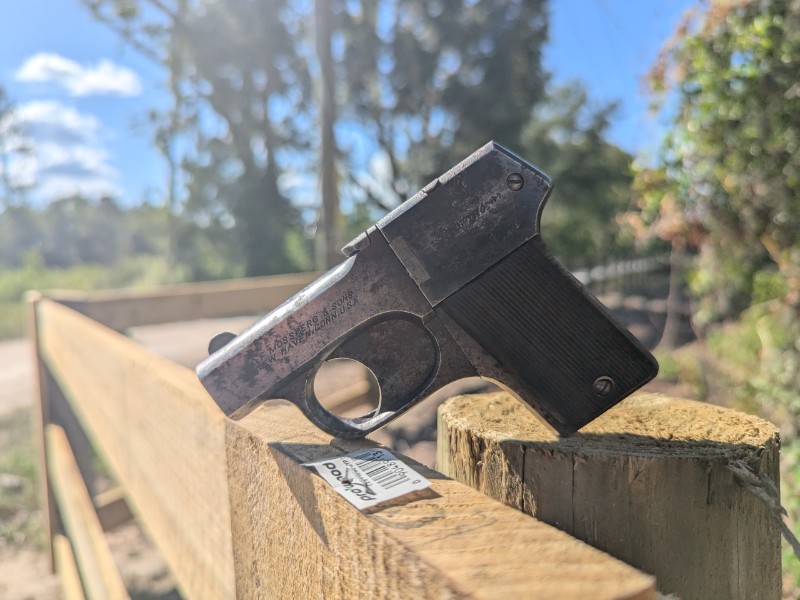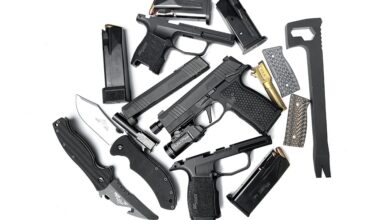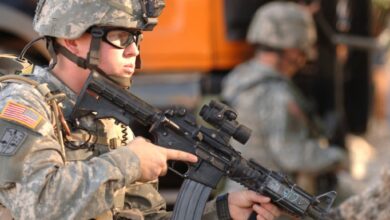The Mossberg Brownie: Mossberg’s First Gun

Mossberg is a renowned firearms manufacturer, mostly known for producing high-quality shotguns. The company does offer a small line of handguns and rifles, but shotguns seem to be their mainstay. However, it wasn’t a shotgun that brought Mossberg into the limelight in the early days of the 20th century. Instead, Mossberg first came to the market with the Brownie, a four-shot pepperbox chambered in .22LR.
In 1919, Oscar Mossberg, a Swedish immigrant, embarked on a journey that would shape the American firearms industry. He founded the company under the Mossberg name as a family-owned business. In fact, the company remains in the hands of the Mossberg family to this day. This is a rare tale in the world of American gun companies, where many have fallen under the control of holding groups. Mossberg’s story is a testament to the American dream, and it all began with a unique and unconventional firearm.
The Brownie: Smart and Cheap
The Brownie is a very small and unusual handgun. It’s a bit of a mix of a pepperbox and a derringer. If you look at the gun from the side, you might assume it’s a semi-auto handgun. Mossberg did advertise it as semi-auto, but it’s no autoloader.
The trigger used a double-action design, resulting in a reliable and consistent pull. Further, the gun didn’t fire all four rounds with a single pull of the trigger. Instead, it fired one round per pull of the trigger, which meets the ATF definition of semi-auto, even if the gun is not an autoloader. The firing pin rotated with every trigger pull, allowing the gun to easily swap from barrel to barrel to fire, and the shooter could quickly fire all four rounds.
It’s not quite a semi-auto, but in 1919, it easily offered some similar firepower to a magazine-fed, single-barrel, semi-auto pistol. It offered that firepower at a much lower price than other options.
Let’s try to remember the world of handguns in 1919. It’s most revolvers, but automatics have had their baptism by fire in World War I. New technology demands a higher price, and automatic handguns are expensive. I found old ads from 1920 to get an idea of the price points of various semi-autos and revolvers. In those days, a Savage 1907 cost $20-22, a Colt M1911 cost $33.75, and even the budget-friendly Iver Johnson Hammer Safety cost about $11.

Keep in mind that $1 in 1920 was worth about $15 today. Mossberg’s Brownie offered shooters a repeating action for a mere $5. That’s less than half the price of a safety automatic and a quarter of the Savage M1907.
Low price, high value?
The Mossberg Brownie had some downsides compared to standard auto-loading firearms. Obviously, it only fired four rounds. Most micro-sized semi-autos of the era could hold six rounds of .25 ACP. Four rounds is a cut on ammo, for sure. It’s also slower to reload than a semi-auto and likely slower than a revolver.

The gun didn’t have extractors or ejectors. Once fired, the four shells just kind of hung out when the barrel opened. The Brownie came with a small rod that was in the frame. The shooter could remove the rod and push the spent cartridges out of the barrel to make room for fresh cartridges.
Mossberg advertised the Brownie as a tool for trappers and hunters. It’s a gun designed to deliver the coup de grace to a wounded animal. In that role, it’s a great little gun. I can see it being a handy tool a hunter could drop in their pocket and easily deliver that final shot to kill their chosen prey. The smaller caliber dispatched the animal while creating a very small hole in the hide.

The Brownie didn’t seem to be intended for self-defense, but I could see it dropping into that role on the cheap. If you can’t afford a proper Browning-designed Vest Pocket Pistol, then the Brownie is roughly the same size. It offered more firepower than a Remington or Colt derringer and delivered a somewhat faster rate of fire than any derringer.
Breaking Down the Mossberg Brownie
The Brownie is a very simple gun. At the rear, we have a handle that lifts a tab and allows the barrels to separate from the frame. The barrels pivot forward dramatically on an axis that comes for the grip. It doesn’t break open like a shotgun. It’s more like a derringer. The four barrels look back at you, making it easy to load fresh rounds or eject empty shells.
My gun is slightly broken. The tab broke from the rest of the gun. It still pivots and operates, just a little less ergonomically. That explains why I only had to pay a pittance for the weapon. Once loaded, you push the barrels upward and in place, and the weapon’s ready. There is no manual safety device, and the long double-action trigger pull acts as the safety device. It’s not much different than a revolver in that regard.
The barrels are 2.5 inches long and topped with a very simple front sight. It’s a blade-style sight, and there was no rear sight. For killed trapped animals, you weren’t taking long-range shots but likely shooting at near point-blank range. The little gun was only 4.5 inches long and weighed 10 ounces total.
Shooting the Brownie
If you own a Mossberg Brownie, there is a chance it’s over a century old. The little .22LR round has evolved and changed a lot since then. These days, a lot of .22LR ammo packs a lot of punch compared to cartridges from yesteryear. With that in mind, if you own a Brownie, then you owe it to yourself to be ammo cautious. There aren’t many of these still kicking, so keep the CCI Stingers clear of the Brownie.

Personally, I only shoot .22 Short CB Cap through the gun. That means there is no gunpowder; it’s just light rounds propelled by nothing more than a primer. This makes them very low-pressure and helps preserve the old gun. Even with CB Cap, I don’t shoot the gun all that often. When I do, I enjoy it immensely. Even with just a front sight and CB Cap rounds, the gun’s fairly accurate.
I can hit a ten-inch gong four-for-four at 15 yards. The little gun has no recoil and is arguably hearing-safe with CB cap loads. I still suggest ear pro, but the round smacking the steel target sounded louder than anything else.

What shocked me most was the trigger. It’s super smooth. The pull is long and slightly heavy, but it’s smooth for a gun that’s not far from its centennial. I can see why such a small company producing such an odd pistol was able to sell 37,000 of them. It’s a handy little gun, and if it was 1919, I know I would have purchased one and likely shot the hell out of it. Shoot, it’s 2024, and I bought one.
Beyond the Mossberg Brownie
The Brownie idea didn’t fade. A few similar designs have come and gone. Advantage Arms produced a weapon known as the 442, which is a modernized Brownie. Its production was short, but the gun featured the same rimfire chambering and four-barrel design with a double-action trigger and rotating firing pin.
Outside of the rimfire world, the COP derringer delivered a more modern option. This .38/.357 derringer wasn’t successful but grew from the idea of the Brownie. The COP Derringer was intended to be a backup for police and law enforcement, but a few flaws kept it from taking off.
Mossberg isn’t going to make another Mossberg Brownie, but it would be a lot cooler if they did. The Brownie is a fascinating and often forgotten part of American firearms history, and if you get the chance to shoot one, you should definitely take it.
The post The Mossberg Brownie: Mossberg’s First Gun appeared first on The Mag Life.
Read the full article here






